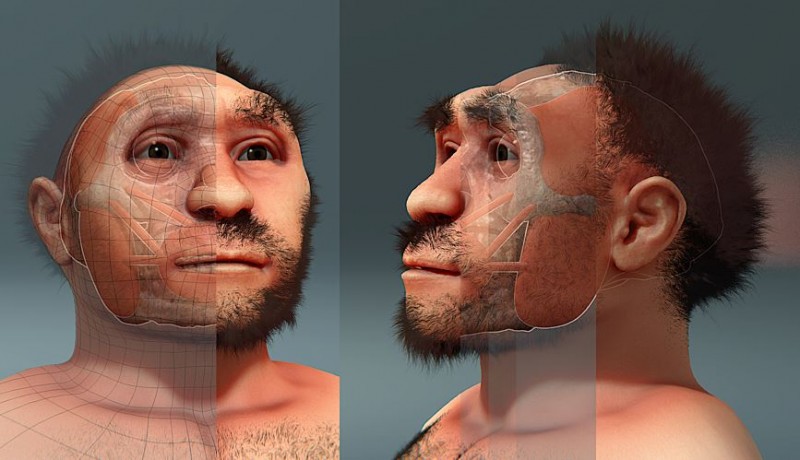
Forensic facial reconstruction is an intricate and captivating field that plays a vital role in solving crimes and identifying unknown individuals. By analyzing human skulls, forensic experts employ a blend of artistry, science, and technology to reconstruct the faces of those whose identities remain shrouded in mystery. This article delves into the fascinating world of forensic facial reconstruction, exploring the techniques, challenges, and impact it has on criminal investigations.
What is Forensic Facial Reconstruction?
Forensic facial reconstruction is a technique used in forensic anthropology and archaeology to recreate the facial features of an individual based on their skeletal remains. This process aims to generate a lifelike representation of the person, offering investigators a glimpse into their appearance in life. The reconstructed face can then be compared to missing persons databases, historical records, or living relatives to establish their identity.
The History of Forensic Facial Reconstruction
The origins of facial reconstruction can be traced back to the late 19th century when early pioneers attempted to reconstruct faces of historical figures. However, it wasn't until the mid-20th century that the field saw significant advancements. In 1950, the first scientifically documented facial reconstruction was performed on the skull of a prehistoric woman found in France. Since then, the techniques and technology have evolved, revolutionizing the accuracy and reliability of facial approximations.
The Process of Forensic Facial Reconstruction
1. Collecting and Analyzing Skeletal Remains
The process begins with the careful excavation and collection of skeletal remains from crime scenes, archaeological sites, or accidental discoveries. Forensic experts thoroughly analyze the bones to determine sex, age, and ancestry, which aids in creating a more accurate reconstruction.
2. Creating a Skull Model
The next step involves creating a physical or digital model of the skull. This model serves as the foundation upon which the facial features will be reconstructed.
3. Tissue Depth Marking
To understand the thickness of soft tissues covering the skull, tissue depth markers are placed at key points. These markers are based on average tissue depths for specific population groups.
4. Muscle and Skin Depiction
Working with the tissue depth markers as a guide, the forensic artist begins to build the muscles and add layers of clay or other materials to simulate the appearance of the face.
5. Fine-Tuning the Features
In this stage, the facial features are fine-tuned, paying attention to details such as the eyes, nose, lips, and ears. The artist relies on their knowledge of anatomy and artistic skills to create a lifelike representation.
The Role of Artistry in Facial Reconstruction
Artistry is a fundamental aspect of facial reconstruction, as it involves transforming scientific data into an aesthetically appealing and recognizable face. Forensic artists possess a rare combination of scientific knowledge and artistic talent, allowing them to breathe life into the lifeless remains.
Advancements in Technology and 3D Reconstruction
Recent technological advancements have significantly impacted forensic facial reconstruction. Computerized Tomography (CT) scans now provide detailed images of the skull, enabling a more accurate depiction of facial structure. Additionally, facial reconstruction software has emerged, assisting forensic artists in the digital manipulation of facial features.
Challenges in Forensic Facial Reconstruction
As with any forensic technique, facial reconstruction is not without its challenges. Some of the common hurdles faced by forensic artists include:
1. Fragmented Skulls
In cases where only partial skulls are recovered, reconstructing the entire face becomes far more challenging and less precise.
2. Lack of Reference Data
For historical or ancient remains, reference data may be scarce or nonexistent, making it harder to estimate facial features accurately.
3. Interpretation Bias
Forensic facial reconstruction requires subjective decision-making by the artist, which may lead to some degree of interpretation bias.
Real-Life Applications of Forensic Facial Reconstruction
Forensic facial reconstruction has been instrumental in solving a myriad of cases, including:
1. Unidentified Human Remains
In unidentified body cases, facial reconstructions have led to the recognition and identification of missing persons.
2. Historical and Archaeological Discoveries
Facial reconstructions of ancient remains have provided valuable insights into the appearance of our ancestors and historical figures.
3. Missing Persons Cases
By creating facial approximations, investigators can breathe hope into cold cases and bring answers to families searching for their loved ones.
Forensic Facial Reconstruction vs. DNA Analysis
While DNA analysis remains the gold standard for identifying individuals, facial reconstruction is often used when DNA evidence is insufficient or unavailable. The two techniques complement each other, strengthening the overall investigative process.
Ethical Considerations in Facial Reconstruction
Despite its benefits, facial reconstruction raises ethical concerns that must be addressed:
1. Respect for the Deceased
Facial reconstruction involves manipulating the remains of the deceased, necessitating utmost respect and sensitivity.
2. Privacy Concerns
The reconstructed face might resemble a living person, raising privacy concerns for potential living relatives.
3. Consent and Cultural Sensitivity
In some cultures, facial reconstruction may be seen as intrusive. Respecting cultural beliefs is paramount in this process.
The Future of Forensic Facial Reconstruction
As technology continues to advance, the future of forensic facial reconstruction holds promising developments:
1. Advancements in Forensic Science
New scientific techniques and equipment will further enhance the accuracy and reliability of facial reconstructions.
2. Integration of Artificial Intelligence
Artificial intelligence may play a role in automating certain aspects of the reconstruction process, aiding forensic artists in their work.
Forensic facial reconstruction is an extraordinary blend of art and science, unlocking the mysteries hidden within skeletal remains. It breathes life into the past and helps solve crimes that once seemed unsolvable. As technology progresses and ethics are prioritized, forensic facial reconstruction will continue to be a powerful tool in the pursuit of truth and justice.
Twitter Unveils a Bold New Logo, Leaving Users Divided
Govt to withdraw DNA Technology Regulation Bill, 2019 from LS
The Antikythera Mechanism: Ancient Greek Computer or Celestial Calculator?